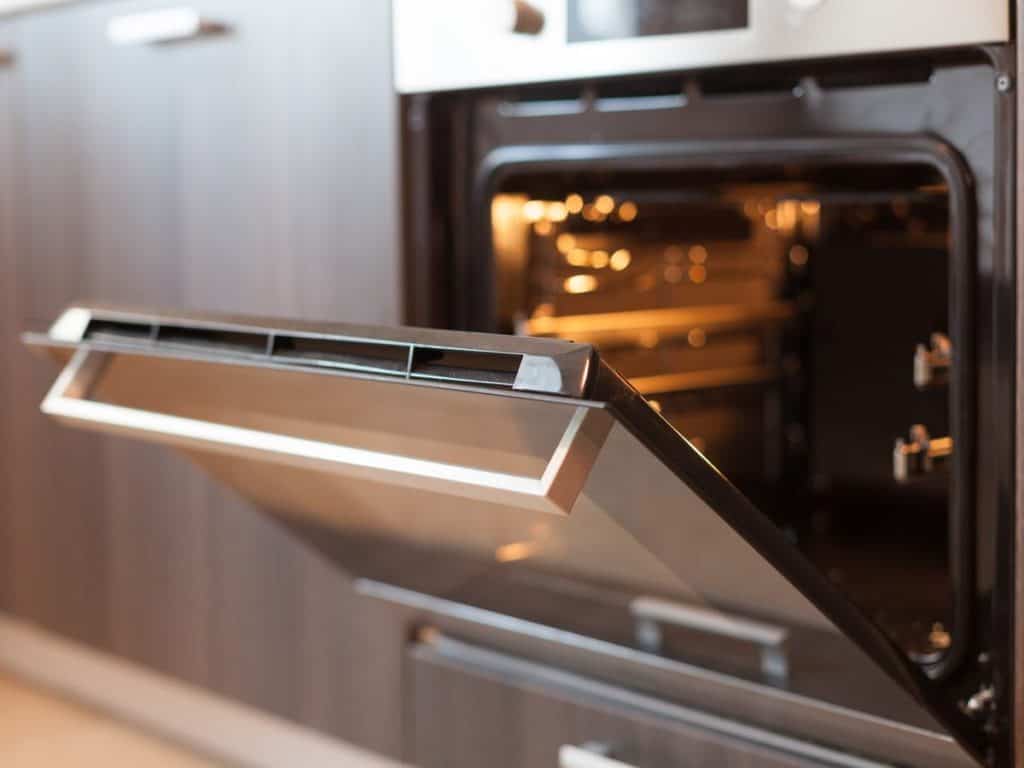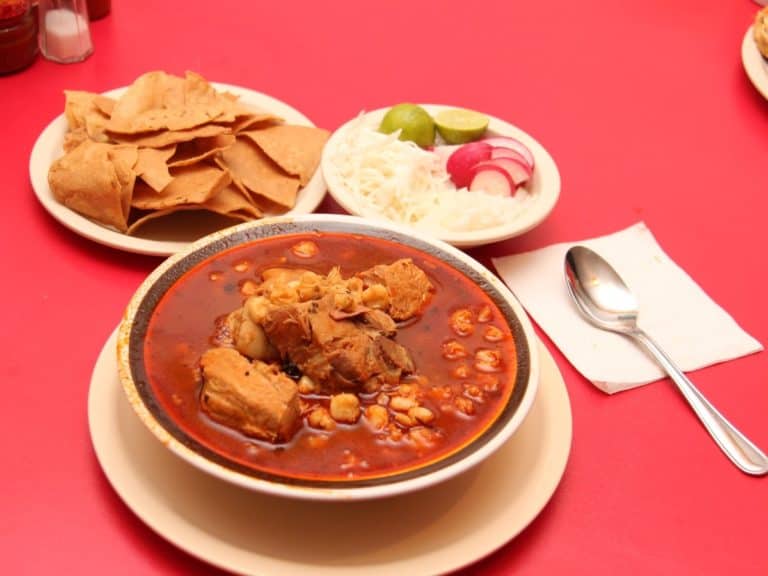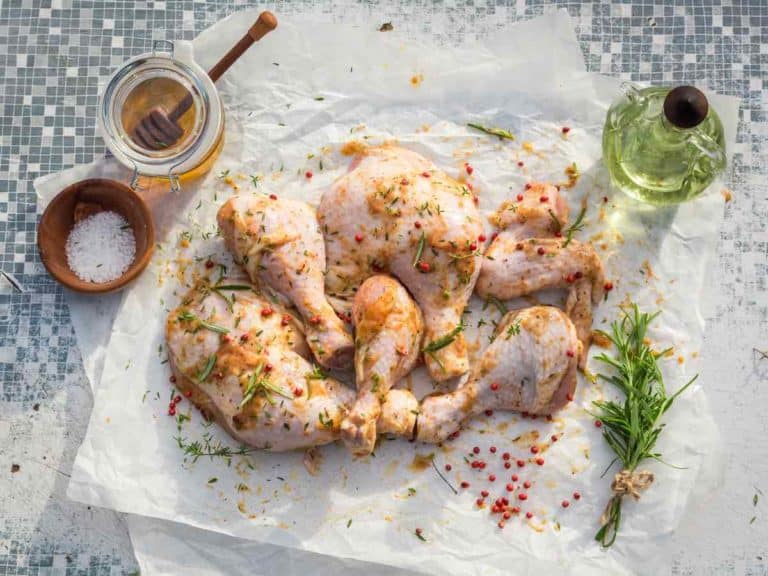How Do You Bake or Cook Two Things At The Same Time in Oven
No one ever said that you can use your oven to cook only one thing at a time. If you will be strategic and cunning about it, it’s possible for you to be able to whip up two delectable dishes on the double, thus allowing you not only to conserve precious resources but also pacify some complaining bellies in a flash.
To bake or cook two things at once, set the oven at the average of cooking temperatures of the dishes. The oven can also be preheated quickly by giving it a burst of high heat for a few minutes. Besides the preheating time, the cooking time can also be shortened by increasing the oven temperature.
Have to serve up a feast but got no sous chefs ready to take orders from you? Read on!
We will talk about how you can use your oven to cook more than just a single dish at once, which is a huge plus for all concerned parties — you and your guests. Keep in mind everything you will learn below each time, and you will never see your trusted oven the same way again.
But first, let’s answer this question that will pave the way for the centerpiece of this article…

How to Speed Up Oven Time
Increasing the oven temperature can cut down the oven time. In some instances, the cooking time in the oven can be up to 50% faster than usual. However, it’s very important to keep an eye on what’s in the oven if using a higher temperature in order to keep it from being burnt or overcooked.
The majority of domestic ovens can go as high as anywhere from 500°F (260.5°C) to 550°F (287.8°C). However, it’s very rare for you to come across a recipe online that requires you to cook the dish at maximum oven temperature.
If you are in a time crunch, it can be tempting to set the temperature higher than what the recipe says.
Suppose that something needs to be baked at 200°F (93.3°C) for 45 minutes. If you want to be able to serve it faster by increasing the cooking temperature to 250°F (121.1°C), naturally, it will be done in less than 45 minutes.
But just how long should it remain cooking in the oven using the adjusted cooking temperature?
Here are the steps on determining how long you should cook something if the cooking temperature is increased:
Step #1: Get the difference
Obtain the percentage of the difference between the original cooking time and the adjusted cooking time by dividing the original cooking time by the adjusted cooking time.
Example: 200°F / 250°F = 0.8 or 80%.
Related Article: Can You Overcook Potatoes
Step #2: Obtain the new cooking time
Multiply the obtained decimal value (instead of the percentage value) by the initial cooking time in order to get the adjusted cooking time. Example: 0.8 x 45 minutes = 36 minutes.
That’s it you — just computed the new cooking time according to the adjusted cooking temperature.
But keep in mind that it’s far from being an exact science, which means that you should not take whatever it is that you are cooking out of the oven at exactly 36 minutes. Based on the given example, it’s a good idea to check earlier just to be certain. For instance, you may inspect it after around 30 minutes.
Hate the thought of doing math or just want to have an idea of just how quicker and breezier cooking can be when you go for a temperature higher than what the recipe says?
Below, you will come across a variety of tables demonstrating the adjusted cooking times based on the adjusted cooking temperatures. Each table represents one original cooking time, ranging from as short as 20 minutes to as long as 60 minutes.
Needless to say, the figures below are based on the cooking time adjustment calculator above.
ORIGINAL TIME: 20 MINUTES
| ORIGINAL TEMPERATURE | ADJUSTED TEMPERATURE | ADJUSTED TIME |
| 50°F (10.0°C) | 100°F (37.8°C) | 10 minutes |
| 100°F (37.8°C) | 150°F (65.6°C) | 13 minutes |
| 150°F (65.6°C) | 200°F (93.3°C) | 15 minutes |
| 200°F (93.3°C) | 250°F (121.1°C) | 16 minutes |
| 250°F (121.1°C) | 300°F (148.9°C) | 16.5 minutes |
| 300°F (148.9°C) | 350°F (176.7°C) | 17 minutes |
| 350°F (176.7°C) | 400°F (204.4°C) | 17.5 minutes |
| 400°F (204.4°C) | 450°F (232.2°C) | 17.5 minutes |
| 450°F (232.2°C) | 500°F (260.5°C) | 18 minutes |
| 500°F (260.5°C) | 550°F (287.8°C) | 18 minutes |
Again, the cooking time adjustment calculator used for coming up with the different tables of adjusted cooking times for adjusted cooking temperatures is not an exact science.
In real life, the adjusted cooking time could be a little shorter or a little longer.
Keeping an eye on what you are cooking in the oven is a must, especially around the estimated adjusted cooking time. This will help ensure that you will serve something that’s neither undercooked nor overcooked.
And the more you incorporate cooking temperature adjustments into your kitchen life, the more you will be able to get the hang of it.
Check Appendix A for Baking Time Adjustments Based on Temperature.
How To Bake Two Things in the Oven at Different Temperatures
Cooking two different dishes in the oven can be done by setting the appliance at the average between the cooking temperatures of the two recipes. This will keep the other from getting overcooked and the other from being undercooked. Unfortunately, this does not apply to two different baked goods.
Especially if you have a large oven, cooking one thing in it at a time is a complete waste of space.
But it’s not just real estate in your trusted kitchen appliance that is wasted whenever you steer clear of letting it multitask. It’s also a waste of your time — especially if it’s the season for gatherings with family and friends, using the oven to cook a masterpiece of yours one at a time is not really the most time-consuming move.
It’s a good thing that for as long as there’s available space in the oven, you can cook another thing that will fit in it, thus making it possible for you to save precious resources.
However, there is one very important thing you need to know before you attempt to put two things in your oven at once: it’s not a good idea to bake two different baked products at the same time. That’s because the vast majority of bread, muffins, blondies, cakes and other baked treats require a specific temperature.
The only exception to the rule is that if the two different baked goodies require the very same temperature and the very same cooking time, which can be quite rare.
So, needless to say, you can cook two things in the oven at different temperatures only if dishes are involved. And it’s so much easier than you think: all you have to do is determine the cooking temperature of each one, add the two together, and divide in two — the number you get is the temperature at which you should set the oven.
One of the dishes, for instance, needs to be cooked at 150°F (65.6°C). Meanwhile, the other needs to be cooked at 250°F (121.1°C). Based on the given figures, the average cooking temperature is 200°F (93.3°C).
By setting your oven at the temperature right in between the two cooking temperatures, you will be able to remove from the oven the first dish as soon as it’s perfectly cooked, and you will be able to allow the other dish to remain in the oven for a few more minutes until it’s completely cooked.
Here are some other things to consider when cooking two things in the oven at once:

Refrain from opening the oven door often
Each time you open the oven to check the dishes in it, heat escapes.
This will cause the dish that requires a higher cooking temperature to cook longer, thus keeping you from saving as much cooking time as you possibly can.
Opening, checking, opening, prodding, opening, poking — you might end up cooking the dishes longer than necessary!
Opt for a large baking dish
As a general rule of thumb, the larger the baking dish, the quicker the dish cooks. That’s because it allows heat to penetrate more of the ingredients better and faster. Especially if there’s plenty of room left because you have a rather large oven, refrain from scrimping on space by using large baking dishes.
Utilize the top shelf of the oven wisely
Ovens, including fan-assisted models, tend to cook things on the top shelf quicker than those on the bottom shelf. Needless to say, it’s a good idea to place the recipe that requires a longer cooking time on the top shelf.
And if the cooking times of both dishes are not that far apart from one another, they might even get cooked at the same time.
Plan ahead for a hassle-free multiple cooking experience
Before the grand day arrives, consider doing a dry run. While the oven is off, check which baking dishes can fit without any trouble in the oven.
Check, too, if racks have to be moved around to maximize available real estate. With careful planning, you can shorten the time you will have to spend in the kitchen and dodge unnecessary stress, too.
How To Speed Up Preheating Time
Setting the oven’s temperature much higher than necessary for a few minutes will help cut down preheating time. This will cause the appliance to heat up quickly, thus allowing it to reach the desired temperature faster. After a while, the oven’s temperature should be set to the required temperature.
Preheating the oven can take up a huge fraction of the entire cooking time — how much time it consumes will depend on the kind of oven you have in your kitchen.
It’s not uncommon for an average gas oven to take anywhere from seven to ten minutes to preheat.
Meanwhile, an average electric oven can require anywhere from ten to 15 minutes to preheat. Some older electric oven models can take as much as 20 minutes or even higher to preheat!
No matter the oven you trust, one thing remains true: preheating doesn’t happen in an instant.
Fortunately, you can cut down preheating to three to five minutes! Whether you have to come up with a dish or baked goodie without any delay or you simply don’t want to get your patience tested, just remember the following simple steps to get your oven preheated in no time:

Step #1: Set the oven to a higher temperature
In order to speed up the preheating process considerably, give your oven a quick burst of heat. You can do this by setting the oven’s temperature higher than what’s stated in the recipe. It’s a good idea to go 50 to 100 degrees higher than necessary, depending on the kind or model of your oven.
Step #2: Wait for a little while
Even if you set the oven to its highest possible temperature, it will still take a moment for your trusted kitchen appliance to get there.
But the good news about setting your oven to a higher temperature when preheating it is that, more often than not, you will usually have to wait for three to five minutes only instead.
Step #3: Set to the required temperature
After waiting for three to five minutes, which is nothing compared to waiting for 20 minutes, it’s time to set the oven’s temperature to what the recipe says. Thanks to the burst of heat introduced into the oven’s interiors, the preheat time can be reduced to a mere fraction, thus cutting down the time spent in the kitchen.
That it’s — you don’t have to be a seasoned pastry chef to be able to save time on preheating time!
You can preheat the oven as fast as you possibly can by keeping the oven door shut while waiting for three to five minutes to pass, as instructed above. Heat escapes each time you open the door of your oven. This causes the oven’s temperature to drop, thus making the preheating process complete longer than needed.
When cooking something stored in the freezer or refrigerator, it’s also a good idea to allow it to get as close to room temperature as possible before you place it in the oven.
Just Before You Bake or Cook Two Things at the Same Time
If your oven can accommodate two baking dishes, which is undeniably the case, then you can cook two things in it at once, with the exception of most baked goodies that need to be baked at specific times.
When it’s time for family and friends to share your gastronomic handiwork, allow your oven to be shared by two dishes. By following the tips and tricks mentioned above to a T, you will realize that having famished and impatient guests should be the least of your worries during special occasions!
Appendix A: Adjusting Cooking Time Based on Temperature
ORIGINAL TIME: 25 MINUTES
| ORIGINAL TEMPERATURE | ADJUSTED TEMPERATURE | ADJUSTED TIME |
| 50°F (10.0°C) | 100°F (37.8°C) | 12.5 minutes |
| 100°F (37.8°C) | 150°F (65.6°C) | 16.5 minutes |
| 150°F (65.6°C) | 200°F (93.3°C) | 19 minutes |
| 200°F (93.3°C) | 250°F (121.1°C) | 20 minutes |
| 250°F (121.1°C) | 300°F (148.9°C) | 21 minutes |
| 300°F (148.9°C) | 350°F (176.7°C) | 21.5 minutes |
| 350°F (176.7°C) | 400°F (204.4°C) | 22 minutes |
| 400°F (204.4°C) | 450°F (232.2°C) | 22 minutes |
| 450°F (232.2°C) | 500°F (260.5°C) | 22.5 minutes |
| 500°F (260.5°C) | 550°F (287.8°C) | 23 minutes |
ORIGINAL TIME: 30 MINUTES
| ORIGINAL TEMPERATURE | ADJUSTED TEMPERATURE | ADJUSTED TIME |
| 50°F (10.0°C) | 100°F (37.8°C) | 15 minutes |
| 100°F (37.8°C) | 150°F (65.6°C) | 20 minutes |
| 150°F (65.6°C) | 200°F (93.3°C) | 22.5 minutes |
| 200°F (93.3°C) | 250°F (121.1°C) | 24 minutes |
| 250°F (121.1°C) | 300°F (148.9°C) | 25 minutes |
| 300°F (148.9°C) | 350°F (176.7°C) | 25.5 minutes |
| 350°F (176.7°C) | 400°F (204.4°C) | 26 minutes |
| 400°F (204.4°C) | 450°F (232.2°C) | 26.5 minutes |
| 450°F (232.2°C) | 500°F (260.5°C) | 27 minutes |
| 500°F (260.5°C) | 550°F (287.8°C) | 27 minutes |
ORIGINAL TIME: 35 MINUTES
| ORIGINAL TEMPERATURE | ADJUSTED TEMPERATURE | ADJUSTED TIME |
| 50°F (10.0°C) | 100°F (37.8°C) | 17.5 minutes |
| 100°F (37.8°C) | 150°F (65.6°C) | 23 minutes |
| 150°F (65.6°C) | 200°F (93.3°C) | 26 minutes |
| 200°F (93.3°C) | 250°F (121.1°C) | 28 minutes |
| 250°F (121.1°C) | 300°F (148.9°C) | 29 minutes |
| 300°F (148.9°C) | 350°F (176.7°C) | 30 minutes |
| 350°F (176.7°C) | 400°F (204.4°C) | 30.5 minutes |
| 400°F (204.4°C) | 450°F (232.2°C) | 31 minutes |
| 450°F (232.2°C) | 500°F (260.5°C) | 31.5 minutes |
| 500°F (260.5°C) | 550°F (287.8°C) | 32 minutes |
ORIGINAL TIME: 40 MINUTES
| ORIGINAL TEMPERATURE | ADJUSTED TEMPERATURE | ADJUSTED TIME |
| 50°F (10.0°C) | 100°F (37.8°C) | 20 minutes |
| 100°F (37.8°C) | 150°F (65.6°C) | 26.5 minutes |
| 150°F (65.6°C) | 200°F (93.3°C) | 30 minutes |
| 200°F (93.3°C) | 250°F (121.1°C) | 32 minutes |
| 250°F (121.1°C) | 300°F (148.9°C) | 33 minutes |
| 300°F (148.9°C) | 350°F (176.7°C) | 34 minutes |
| 350°F (176.7°C) | 400°F (204.4°C) | 35 minutes |
| 400°F (204.4°C) | 450°F (232.2°C) | 35.5 minutes |
| 450°F (232.2°C) | 500°F (260.5°C) | 36 minutes |
| 500°F (260.5°C) | 550°F (287.8°C) | 36 minutes |
ORIGINAL TIME: 45 MINUTES
| ORIGINAL TEMPERATURE | ADJUSTED TEMPERATURE | ADJUSTED TIME |
| 50°F (10.0°C) | 100°F (37.8°C) | 22.5 minutes |
| 100°F (37.8°C) | 150°F (65.6°C) | 30 minutes |
| 150°F (65.6°C) | 200°F (93.3°C) | 34 minutes |
| 200°F (93.3°C) | 250°F (121.1°C) | 36 minutes |
| 250°F (121.1°C) | 300°F (148.9°C) | 37.5 minutes |
| 300°F (148.9°C) | 350°F (176.7°C) | 38.5 minutes |
| 350°F (176.7°C) | 400°F (204.4°C) | 39 minutes |
| 400°F (204.4°C) | 450°F (232.2°C) | 40 minutes |
| 450°F (232.2°C) | 500°F (260.5°C) | 40.5 minutes |
| 500°F (260.5°C) | 550°F (287.8°C) | 41 minutes |
ORIGINAL TIME: 50 MINUTES
| ORIGINAL TEMPERATURE | ADJUSTED TEMPERATURE | ADJUSTED TIME |
| 50°F (10.0°C) | 100°F (37.8°C) | 25 minutes |
| 100°F (37.8°C) | 150°F (65.6°C) | 33 minutes |
| 150°F (65.6°C) | 200°F (93.3°C) | 37.5 minutes |
| 200°F (93.3°C) | 250°F (121.1°C) | 41.5 minutes |
| 250°F (121.1°C) | 300°F (148.9°C) | 42 minutes |
| 300°F (148.9°C) | 350°F (176.7°C) | 43 minutes |
| 350°F (176.7°C) | 400°F (204.4°C) | 44 minutes |
| 400°F (204.4°C) | 450°F (232.2°C) | 44.5 minutes |
| 450°F (232.2°C) | 500°F (260.5°C) | 45 minutes |
| 500°F (260.5°C) | 550°F (287.8°C) | 45.5 minutes |
ORIGINAL TIME: 55 MINUTES
| ORIGINAL TEMPERATURE | ADJUSTED TEMPERATURE | ADJUSTED TIME |
| 50°F (10.0°C) | 100°F (37.8°C) | 27.5 minutes |
| 100°F (37.8°C) | 150°F (65.6°C) | 36.5 minutes |
| 150°F (65.6°C) | 200°F (93.3°C) | 41 minutes |
| 200°F (93.3°C) | 250°F (121.1°C) | 44 minutes |
| 250°F (121.1°C) | 300°F (148.9°C) | 46 minutes |
| 300°F (148.9°C) | 350°F (176.7°C) | 47 minutes |
| 350°F (176.7°C) | 400°F (204.4°C) | 48 minutes |
| 400°F (204.4°C) | 450°F (232.2°C) | 49 minutes |
| 450°F (232.2°C) | 500°F (260.5°C) | 49.5 minutes |
| 500°F (260.5°C) | 550°F (287.8°C) | 50 minutes |
ORIGINAL TIME: 60 MINUTES
| ORIGINAL TEMPERATURE | ADJUSTED TEMPERATURE | ADJUSTED TIME |
| 50°F (10.0°C) | 100°F (37.8°C) | 30 minutes |
| 100°F (37.8°C) | 150°F (65.6°C) | 40 minutes |
| 150°F (65.6°C) | 200°F (93.3°C) | 45 minutes |
| 200°F (93.3°C) | 250°F (121.1°C) | 48 minutes |
| 250°F (121.1°C) | 300°F (148.9°C) | 50 minutes |
| 300°F (148.9°C) | 350°F (176.7°C) | 51.5 minutes |
| 350°F (176.7°C) | 400°F (204.4°C) | 52.5 minutes |
| 400°F (204.4°C) | 450°F (232.2°C) | 53 minutes |
| 450°F (232.2°C) | 500°F (260.5°C) | 54 minutes |
| 500°F (260.5°C) | 550°F (287.8°C) | 54.5 minutes |





